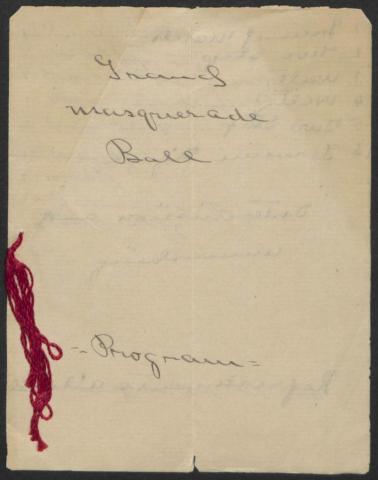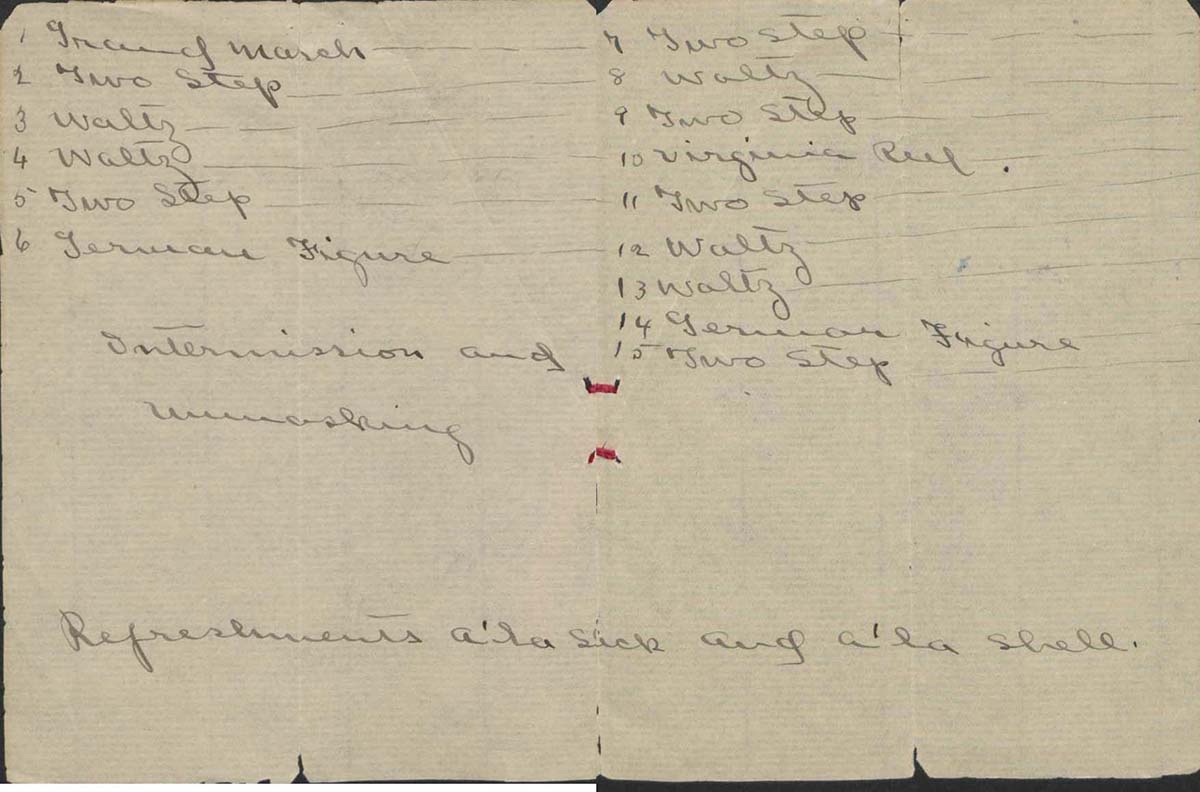
While going through a collection of personal papers, staff at the Stewart Bell Jr. Archives found this sweet handmade dance card for a Grand Masquerade Ball. There isn’t much information about who hosted the ball or when, but the dances, which include a grand march, the two-step, the waltz, German figure, and the Virginia Reel were all popular in the middle to late nineteenth century.
This particular item comes from the papers of Isaac Fontaine Hite (1807-1884), Hite was born at the Belle Grove plantation in Middletown, Frederick County, to Major Isaac Hite Jr. and his wife, Ann Tunstall Maury. Major Hite was the grandson of Joist Hite, who German pioneer who settled with a number of other families in the Shenandoah Valley in the early 1700s.
Isaac Fontaine Hite grew up at Belle Grove and studied at the University of Virginia before returning to Frederick County to take up farming. He received a tract of land known as Rockville from his father’s estate.
Social dance in the nineteenth century was a popular way for people to gather, for couples to meet, to learn the latest news, and for hosts to show their wealth and standing. Balls could be large elaborate affairs or small private parties for family, friends, and neighbors. Whether large or small, a ball would be a highly anticipated event.
Dance cards also became increasing popular in this period. Typically, these were booklets listing the order of dances and sometimes leaving a space for the women to pencil in their dance partners.
The variety of dances listed in this booklet reflects not only the musical trends of this period but also the character of American society, with different immigrant groups bringing their own dancing traditions, as well as developing new ones. The German figure was likely a form of group dance in which dancers moved in a formation, much like a country dance or cotillion. Interestingly, the waltz caused something of a scandal when it first emerged in the early 1800s because of the physical closeness required of the dancing couple.

Image shows the Order of Dance inside the program. Source: Isaac Fontaine Hite Papers, 251 THL, Stewart Bell Jr. Archives, Handley Regional Library & Winchester-Frederick County Historical Society; “A History of Social Dance in America: An American Antiquarian Society Exhibition”: https://www.americanantiquarian.org/Exhibitions/Dance/index.htm